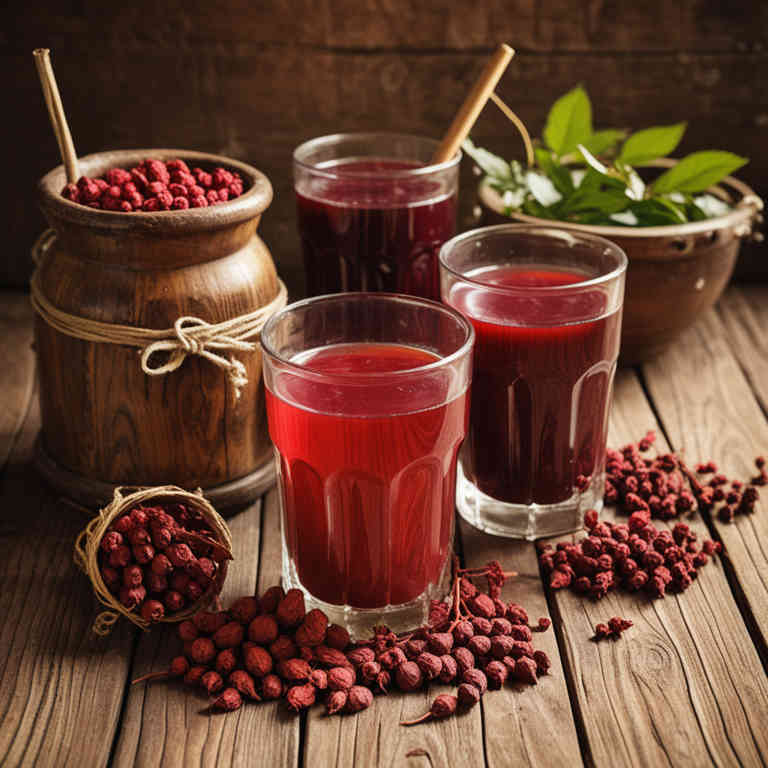Schisandra chinensis juice for medicinal use

Schisandra chinensis juice is a traditional herbal preparation derived from the berries of the Schisandra chinensis plant, also known as the five-flavor fruit.
This juice is known for its unique ability to impart a combination of sweet, sour, bitter, spicy, and salty flavors, which is believed to balance the body's energies in traditional Chinese medicine. It is commonly used to support liver function, enhance mental clarity, and reduce stress and fatigue. The juice is often consumed as a tonic to improve vitality and adaptability to physical and mental challenges.
In herbalism, it is valued for its purported ability to strengthen the immune system and promote longevity.
Uses
Schisandra chinensis juice has been used to enhance physical and mental performance for centuries in traditional Chinese medicine.
It was historically valued for its adaptogenic properties, helping to reduce stress and improve resilience to environmental stressors. In traditional use, it was also employed to support liver function and promote longevity. Modern research suggests it may have antioxidant and neuroprotective benefits, supporting its use in contemporary health supplements.
Today, it is popular as a natural nootropic and for its potential to improve focus and energy levels.
Benefits
Schisandra chinensis juice has health benefits such as enhancing cognitive function, supporting liver health, and improving physical endurance.
It is rich in antioxidants, which help combat oxidative stress and reduce the risk of chronic diseases. This herbal preparation is also known to promote mental clarity and reduce fatigue, making it beneficial for stress management. Additionally, it may aid in detoxification processes within the body.
Schisandra chinensis juice is often used in traditional medicine to strengthen the immune system and improve overall vitality.
Constituents
Schisandra chinensis juice active constituents include lignans, vitamin C, and various phytochemicals such as schisandrin and deoxyschisandrin.
These compounds are known for their antioxidant, adaptogenic, and hepatoprotective properties. Lignans are particularly responsible for the plant's ability to support liver function and reduce oxidative stress. The juice is also rich in essential nutrients that contribute to overall wellness and immune support.
Due to its unique combination of bioactive compounds, Schisandra chinensis juice is often used in traditional medicine to enhance vitality and promote longevity.
Preparation
To make Schisandra chinensis juice, first select ripe red berries from the Schisandra chinensis plant, ensuring they are free from mold or damage.
Wash the berries thoroughly under running water to remove any dirt or debris. Next, blend the cleaned berries with a small amount of water or a mild fruit juice until a smooth pulp is achieved. Strain the mixture through a fine mesh strainer or cheesecloth to separate the liquid from the pulp.
Finally, press the strained pulp gently to extract as much juice as possible, and store the resulting juice in a sealed container in the refrigerator for up to a week.
Side Effects
Schisandra chinensis juice may lead to gastrointestinal discomfort, including nausea, vomiting, and diarrhea, especially when consumed in high doses.
It can also cause insomnia or restlessness due to its stimulating properties. Some individuals may experience increased heart rate or elevated blood pressure as a result of its adaptogenic effects. Prolonged use might lead to dependency or tolerance, reducing its effectiveness over time.
Additionally, it may interact with certain medications, such as antidepressants or blood thinners, potentially leading to adverse health effects.